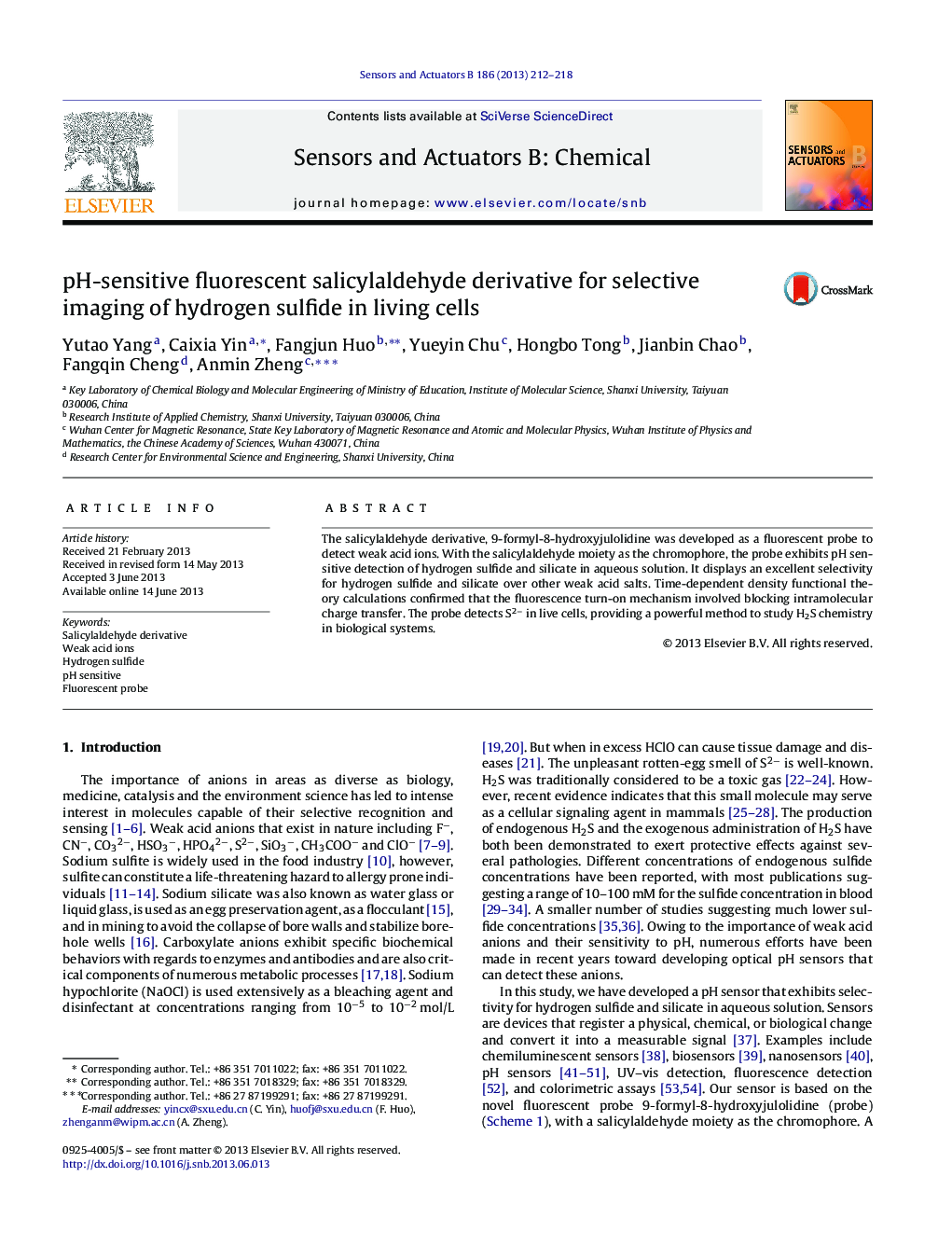| Article ID | Journal | Published Year | Pages | File Type |
|---|---|---|---|---|
| 740306 | Sensors and Actuators B: Chemical | 2013 | 7 Pages |
The salicylaldehyde derivative, 9-formyl-8-hydroxyjulolidine was developed as a fluorescent probe to detect weak acid ions. With the salicylaldehyde moiety as the chromophore, the probe exhibits pH sensitive detection of hydrogen sulfide and silicate in aqueous solution. It displays an excellent selectivity for hydrogen sulfide and silicate over other weak acid salts. Time-dependent density functional theory calculations confirmed that the fluorescence turn-on mechanism involved blocking intramolecular charge transfer. The probe detects S2− in live cells, providing a powerful method to study H2S chemistry in biological systems.
Graphical abstract9-Formyl-8-hydroxyjulolidine, with the salicylaldehyde moiety as the chromophore, was developed as a fluorescent probe to detect hydrogen sulfide and silicate in aqueous solution. Time-dependent density functional theory calculations confirmed that the fluorescence turn-on mechanism involved blocking intramolecular charge transfer. The probe detects S2− in live cells, providing a powerful method to study H2S chemistry in biological systems.Figure optionsDownload full-size imageDownload as PowerPoint slide
